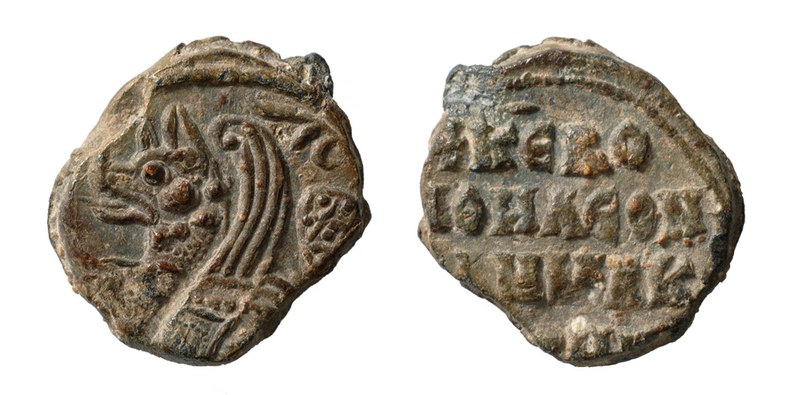High-status textiles, jewelry, and other objects imported or plundered from the Islamic world were popular at the tenth- and eleventh-century imperial court. Minor court functionaries like Zacharias, keen to adopt the styles of their superiors, sometimes replicated the designs found on these objects on their seals.

Leontas’s seal depicts a simurgh, a mythical Persian bird with the head of a dog, claws of a lion, and body of a peacock. Simurghs had been a popular image on elite textiles and metalwork for centuries in Iran. In the tenth century, this fashion reached the Byzantine court, and was then copied by people of more humble status like the butcher Leontas.
Image Sources
- Seal of Zacharias, imperial protospatharios and chief groom (protostrator) (921–931). BZS.2020.017
- Fragment of a hanging or cover with bird (ninth–tenth century). Wool and linen. BZ.1973.3
- Seal of Leontas, butcher (tenth century, second half). 1951.31.5.2285, Harvard Art Museums/ Arthur M. Sackler Museum, Bequest of Thomas Whittemore